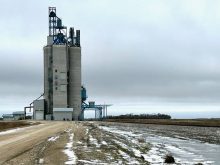Compared to the week ending March 2, western Canadian yearling prices were $3-$5 lower on average. Mid-weight replacements in the range of 650-800 lbs. were down $8-$12. Steer calves under 650 lbs. traded steady to $5 lower. Heifer calves under 650 lbs. were also down $8-$12.
The market was hard to define for heifer calves under 800 lbs. because the prices varied significantly on similar-weight cattle. Order buyers had a deck of interest with strict instructions on price and quality features. Pencils have to be sharper than ever to capture profitability.
The backlog of fed cattle market-ready supplies, along with weaker live cattle futures, set a negative tone this week. Feedlots that booked their feed grains earlier in fall appear to be more active but those on a hand-to-mouth basis are struggling. Feeding margins continue to deteriorate for those feeders with no forward pricing on fed cattle or feed grains. This may explain the variable price structure on similar-weight cattle. It all comes down the crowd at the sale. Many feedlots have pulled in the reins on replacement purchases until margins align.
Read Also

U.S. livestock: CME cattle tick lower in thin pre-holiday trade
Chicago | Reuters – Chicago Mercantile Exchange live and feeder cattle futures were little changed but ended slightly lower on…
Angus-based steers with medium to heavier flesh levels on light grain ration with full health records averaging 800 lbs. were valued at $185 in central Alberta; a group of lower-fleshed Simmental-based steers with full data averaging 865 lbs. reached up to $190 in the same region. Top-quality Angus heifers for feedlot or herd replacements averaging 820 lbs. were valued at $175 in the Lethbridge area. Northwest of Winnipeg, Charolais heifers with medium flesh averaging 845 lbs. were quoted at $171.
North of Saskatoon, red mixed steers with average frames and medium to thicker butter weighing 760 lbs. were quoted at $198; similar-quality heifers weighing 750 lbs. were valued at $178.
In southern Alberta, Speckle mixed steers weighing 630 lbs. were valued at $232 and similar-quality 540-pounders were quoted at $232. In Manitoba, black steers weighing a shade over 600 lbs. reached up to $238.
The bottom line is that high feed grain prices have stretched the risk tolerance for replacements. Most of Western Canada has received less than 40 per cent of normal precipitation over the past 30 days. Interest for grassers is non-existent in Saskatchewan but there is steady Ontario demand surfacing in Manitoba. Corn in Ontario is $354 per tonne, whereas in Lethbridge, imported corn is reaching $490 a tonne.
— Jerry Klassen is president and founder of Resilient Capital, specializing in proprietary commodity futures trading and market analysis. Jerry consults with feedlots on risk management and writes a weekly cattle market commentary. He can be reached at 204-504-8339 or via his website at ResilCapital.com.
















